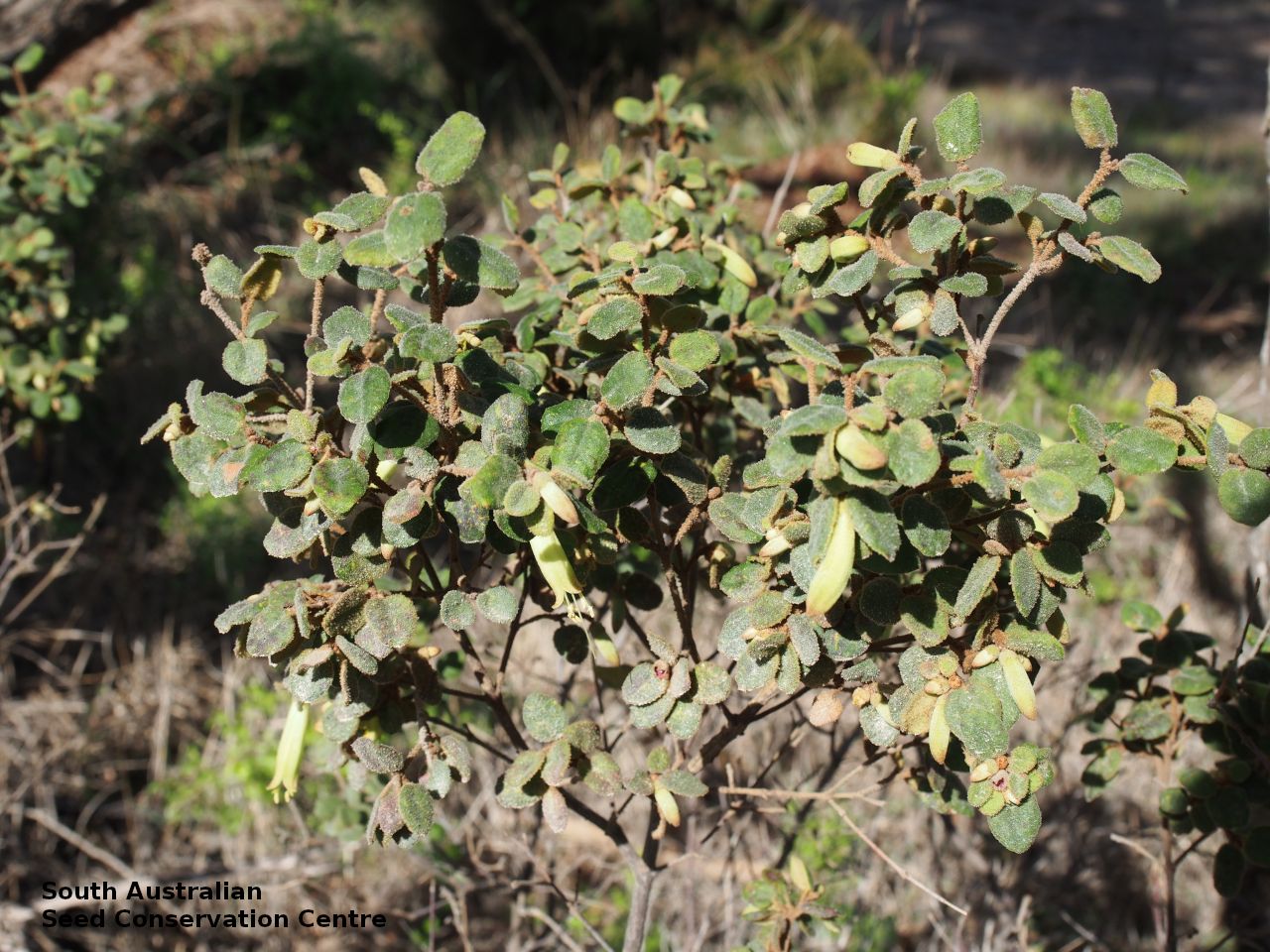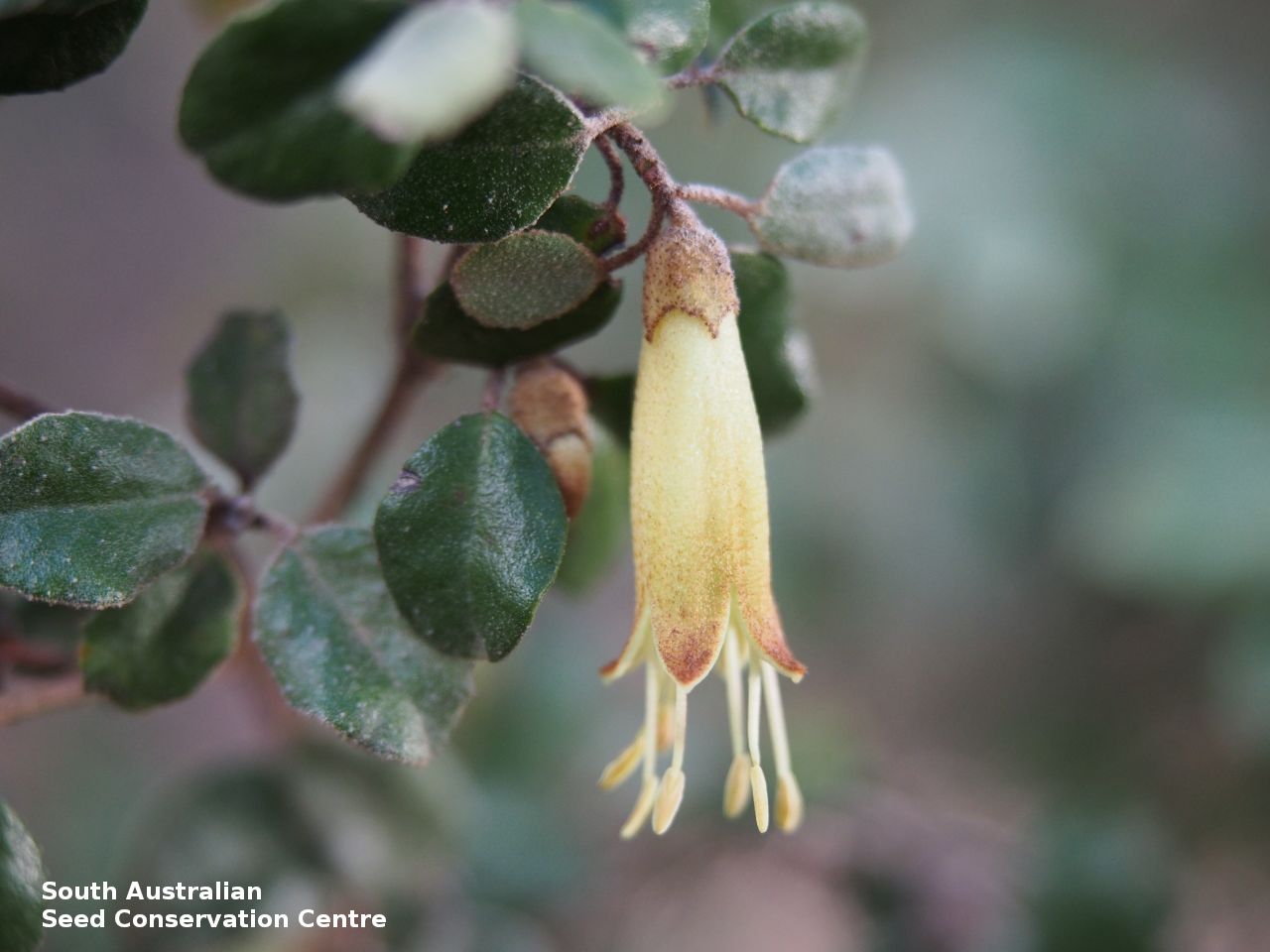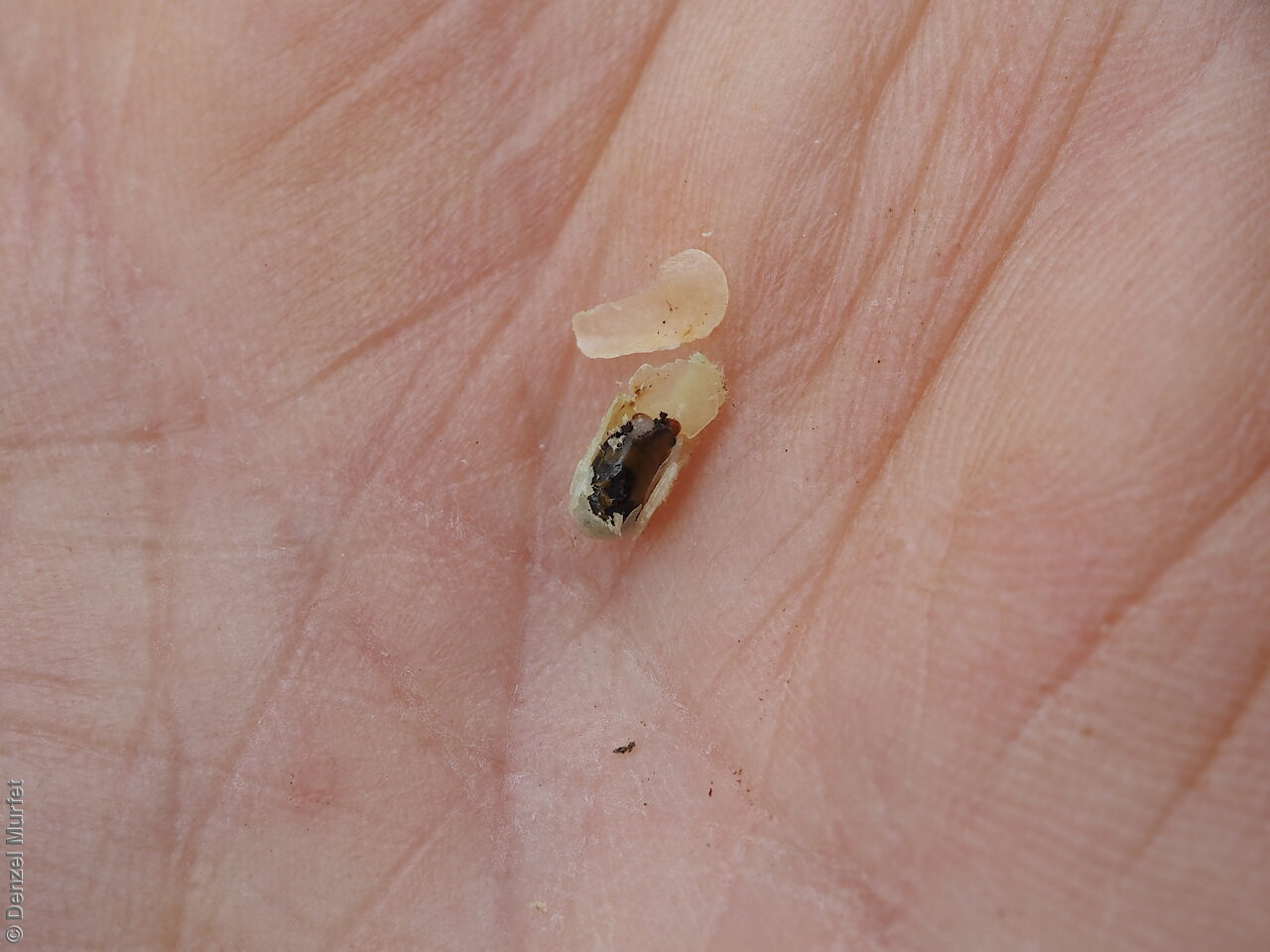

















Prior names
Correa reflexa var. nummulariifolia
Common names
Kangaroo Island Correa
Round-leaf Correa
Etymology
Correa named after Jose Francisco Correa de Serra (1751-1823), a Portuguese botanist. Reflexa from the Latin 'reflectere' meaning to bent backwards; referring to the angle at which the leaf-like bracts above the flowers join the stem. Insularis from Latin meaning pertaining to or growing on islands; referring to the variety occurring only on Kangaroo Island.
Distribution and status
Endemic to South Australia and found only on the eastern side on Kangaroo island, growing in mallee scrub on a variety of soils including ironstone and sand. Native. Rare in South Australia.
Herbarium region: Kangaroo Island
AVH map: SA distribution map (external link)
Plant description
Erect shrub to 2 m high. Leaves broadly ovate to circular, to 2 cm long, flat, rounded at base, obtuse, upper surface minutely stellate-scabrous hairs, lower surface tomentose with obvious stellate hairs. Inflorescence terminal to branches, not surrounded by obvious leafy bracts with thin, cup-shaped calyx and narrowly cylindrical, yellowish green with rusty tip flowers, with moderately densely hairs towards apex but sparsely so towards base. This variety differ from the other two varieties found in South Australia, Correa reflexa var. reflexa which have red with green tips or dull green, drooping flowers clasped between two reflexed foliaceous bracts and C. reflexa var. scabridula which have red with green or pale lobes, erect to drooping flowers not clasped between reflexed foliaceous bracts and trumpet-shaped corolla, rather than having green to yellow, erect to drooping flowers not obviously clasped by foliaceous bracts in C. reflexa var. insularis. Flowering between April and August. Fruits are brown capsule enclose by the sepals. Seed embryo type is linear fully developed.
Seed collection and propagation
Collect seeds between June and September. Collect mature capsules, those that are turning brown and contain hard seeds, either by hands or place small breathable bags over immature capsules to collect seed. Capsules maybe hard to see as it is enclose by the sepals. Place the capsules in a tray and leave to dry for a weeks. Then rub the capsules gently by hand to dislodge the seeds. Be very careful as the seed coat is thin and easily damaged. Use a sieve to separate the unwanted material. Store the seeds with a desiccant such as dried silica beads or dry rice, in an air tight container in a cool and dry place. This species has morphophysiological dormancy and can be difficult to germinate.